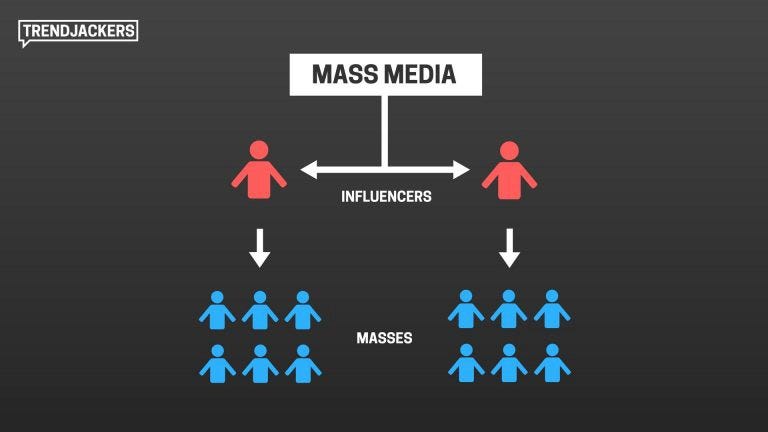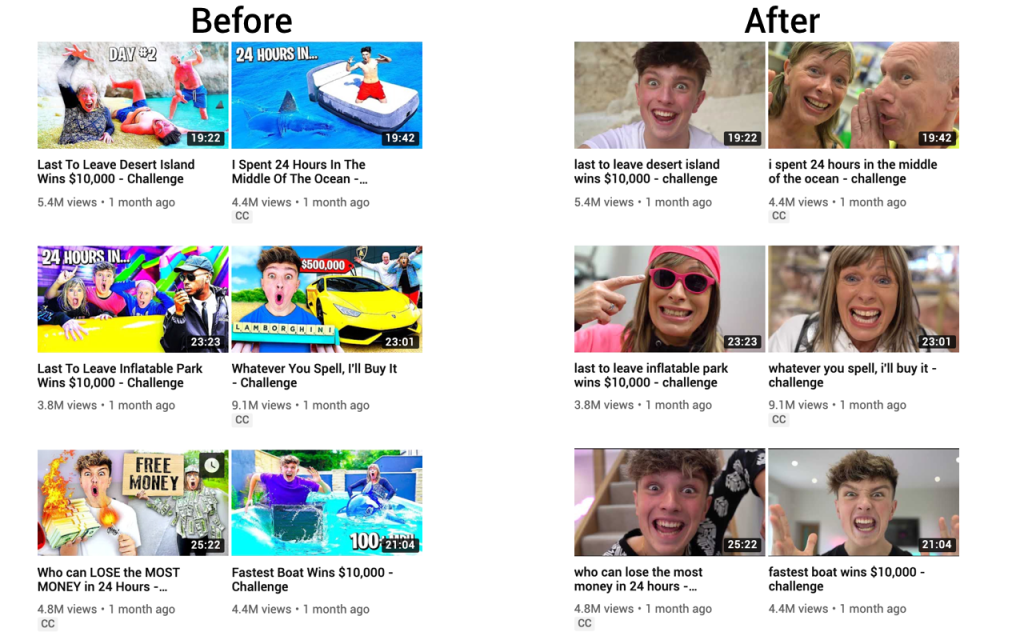Political news, gaming recommendations, natural disasters – when is the last time you heard about those from a direct source and not through another person? In this digital age, it is common to receive information “second-hand”. Sociologists Lazarsfeld, Gaudet, and Berelson researched voting behaviour during the 1940 US presidential election. What they found and developed is called the two-step flow theory of communications.
The theory suggests that instead of direct transmission of information from the media outlets to a large audience, it follows two distinct steps:
Step 1: Media to Opinion Leaders
Media (e.g. newspapers, radio, television) first inform a smaller group of individuals. These are known as opinion leaders. Opinion leaders are more exposed to media and are often popular figures in specific communities and might have a higher interest in the topics than the general population.
Step 2: Opinion Leaders to the Public
These opinion leaders (e.g. influencers, celebrities, experts) then share the information they learnt with less-active members of society, so people who are less exposed or interested in mass media content. This means that many people receive information and media influence indirectly, through opinion leaders, not directly from the media itself.
They concluded that media had a weaker impact on the general public than assumed, and the influence comes from opinion leaders. Furthermore, the two-step flow theory shows that personal communication (for example, word-of-mouth or information that comes with social interactions) plays a critical role in shaping people’s opinions. According to the theory, opinion leaders’ influence is more effective than mass media influence.
A consequence of this is that people base their opinions and facts on opinion leaders. If a relative sends a link in the family group chat, people are likely to believe it because they trust that relative’s judgement. The same principle can be applied to other opinion leaders: If a food influencer tells you, “x place has the best burgers ever.” or an actor says, “This movie has unbelievable acting; definitely worth watching!” you are more likely to believe them. They are experts in their field and have a large and trusted audience.
Therefore, people believe what they see and hear from opinion leaders more blindly. Instead of fact-checking themselves, they trust the opinion is correct. This leads to the circulation of fake news and leaves people susceptible to manipulation.
In traditional media, news outlets often fact-check their stories, and many try to be neutral. That is why it is very difficult to receive objective information through the two-step flow process in the digital age – especially where many opinion leaders are social media influencers. Everyone has their own agenda and opinions that are easily mixed into their content. Additionally, due to the algorithmic and attention-focused foundation of social media, influencers chose potential engagement over facts. Clickbait and extreme information get more attention than normal stories.
Overall, the two-step flow theory is still applicable today. It helps explain the circulation of fake news, as the greater masses hear the opinions and influences of opinion leaders and trust them blindly, without researching on their own. It is vital to keep in mind that this “second-hand” information can be biased when consuming content. If the viewers keep a critical eye open, they can combat manipulation and fake news more easily.
Sources:
CallumCarver (January 2024). The only book you need… [TikTok]. Available at: https://www.tiktok.com/@callumcarver/video/7322533333806615840?_r=1&_t=8qiVyzc1Iq9 (last accessed: 23.10.2024)
Chicksintheoffice (December 2023). Best of 2023: Jeffree Star ranks the best celebrity make-up brands out of 10. [TikTok]. Available at: https://www.tiktok.com/@chicksintheoffice/video/7317373117956115758. (Last accessed: 23.10.2024)
Scannell, P. (2007). Media and Communication. London: Sage. ‘Chapter 1: Mass communication:
Lazarsfeld, Adorno, Merton, USA, 1930s and 1940s’ (pp. 9-30)
Trendjackers (unknown). Image model of two-step flow theory, available at: https://miro.medium.com/v2/resize:fit:4800/format:webp/0*hePO28pzbuhPreum.jpeg (Last accessed: 21.10.2024)
Weimann, G. (2001). Two-Step Flow of Communication. International Encyclopedia of the Social and Behavioral Sciences. (pp. 2316)
van Heijningen, P. (2024). Clickbait Remover for YouTube. Available at: https://chromewebstore.google.com/detail/clickbait-remover-for-you/omoinegiohhgbikclijaniebjpkeopip?pli=1 (Last accessed: 21.10.2024)



I enjoyed reading this blog and it definitely gave me more insight on the two-step theory! I liked how TikTok and YouTube influencers were used to demonstrate opinion leaders and their impact on consumers. I also thought the side by side of the phenomenon of “clickbait” was very interesting to see. Overall, this blog was very helpful in furthering my insight on the two-step theory.
This is an insightful post, highlighting the differences between media outlets and influencers reporting news stories and the motives behind their actions. A way this can be improved is by including the impact of influencers being opinion leaders and what it can lead to.
I completely agree with your point about the influence of opinion leaders in our lives. Nowadays, we often rely on social media for information, whether it’s about study resources, lifestyle choices, or consumer products. Many times, we tend to trust the influencers or bloggers we follow, like Jefree Star and CallumCarver mentioned in your blog. After watching their content, I might still believe in the products they recommend, showing just how significant the influence of opinion leaders is in our daily lives.
I also agree with the fake news issue highlighted in the article. In our social circles, the spread of misinformation is quite common, especially on social media, where many people share or forward information without much thought, leading to the rapid dissemination of misleading content. We should recognize that this blind trust in opinion leaders may lead us to accept inaccurate information. Therefore, maintaining critical thinking and conducting fact-checks are essential skills we need in this information age.
Moreover, social media algorithms often prioritize attention-grabbing content rather than the most accurate or important information. This realization highlights the need for us to actively seek out more reliable sources of information, rather than solely relying on trending topics on social media.
It’s a really great blog! I learned a lot from your blog! Good job!
Clear viewpoints and rich content, I learnt a lot from your article
This blog does a great job breaking down the two-step flow theory and explaining how it plays into the spread of misinformation. The way opinion leaders impact what information people see and trust is super relevant today, especially with social media’s influence. It’s interesting to think about how, even unintentionally, influencers and public figures can help fake news go viral simply because their followers trust them. The blog really highlights the importance of critical thinking in a world where anyone can be a “media source.”